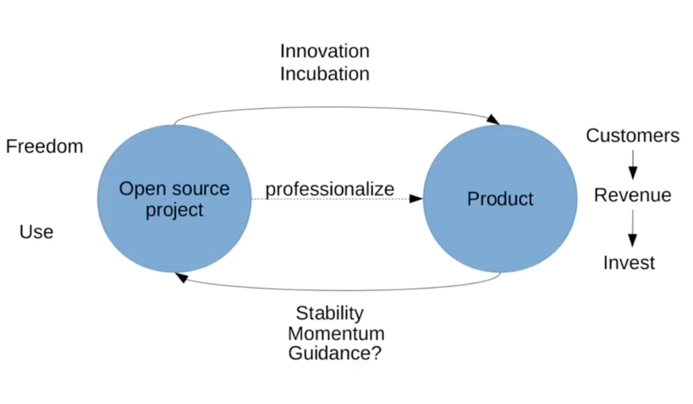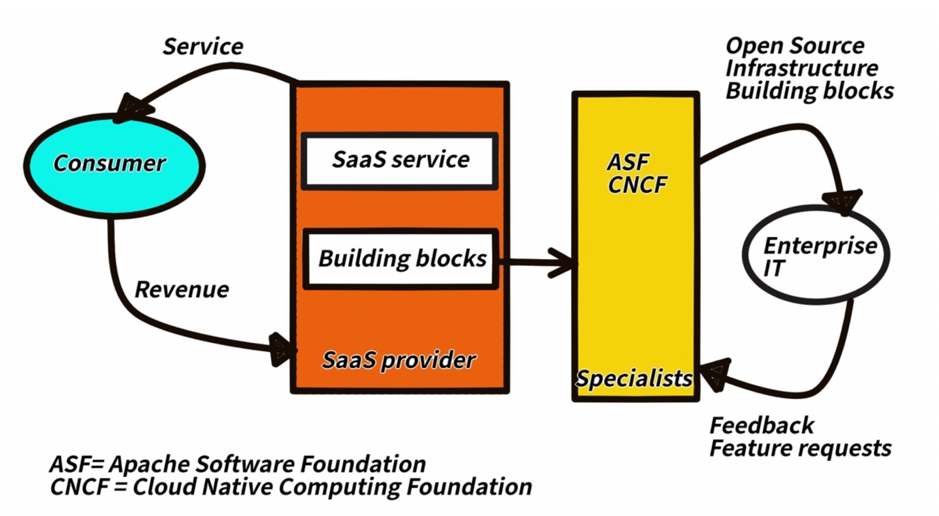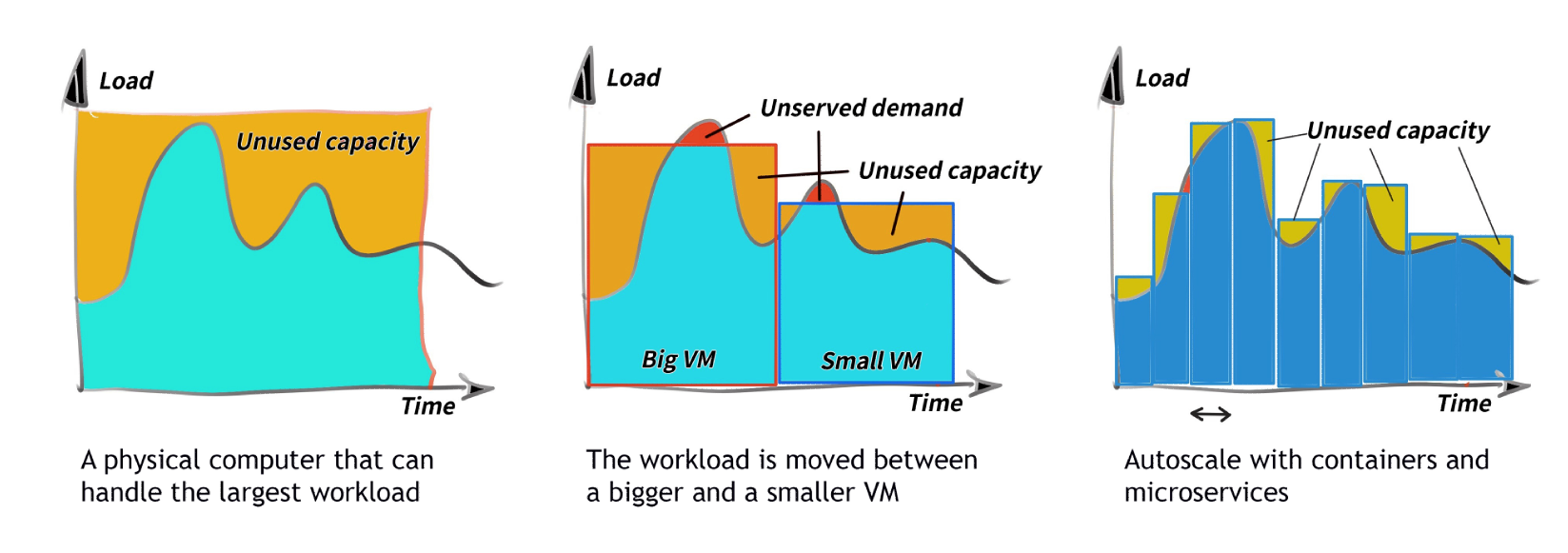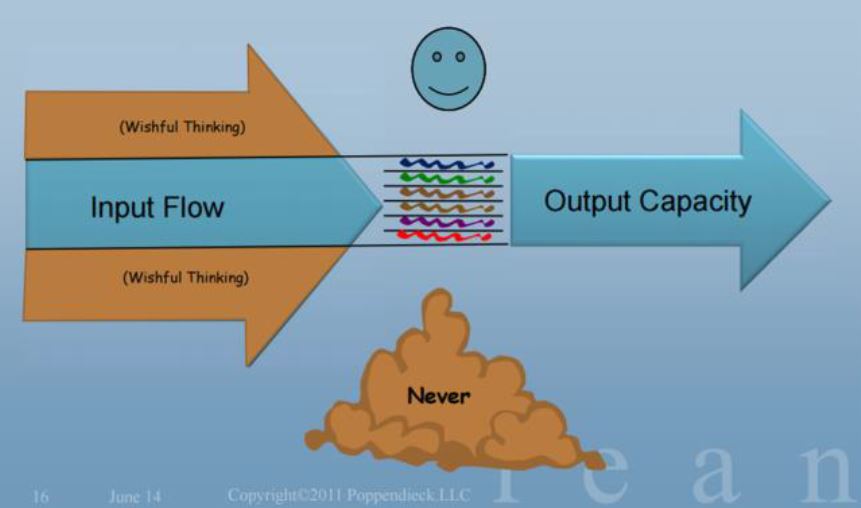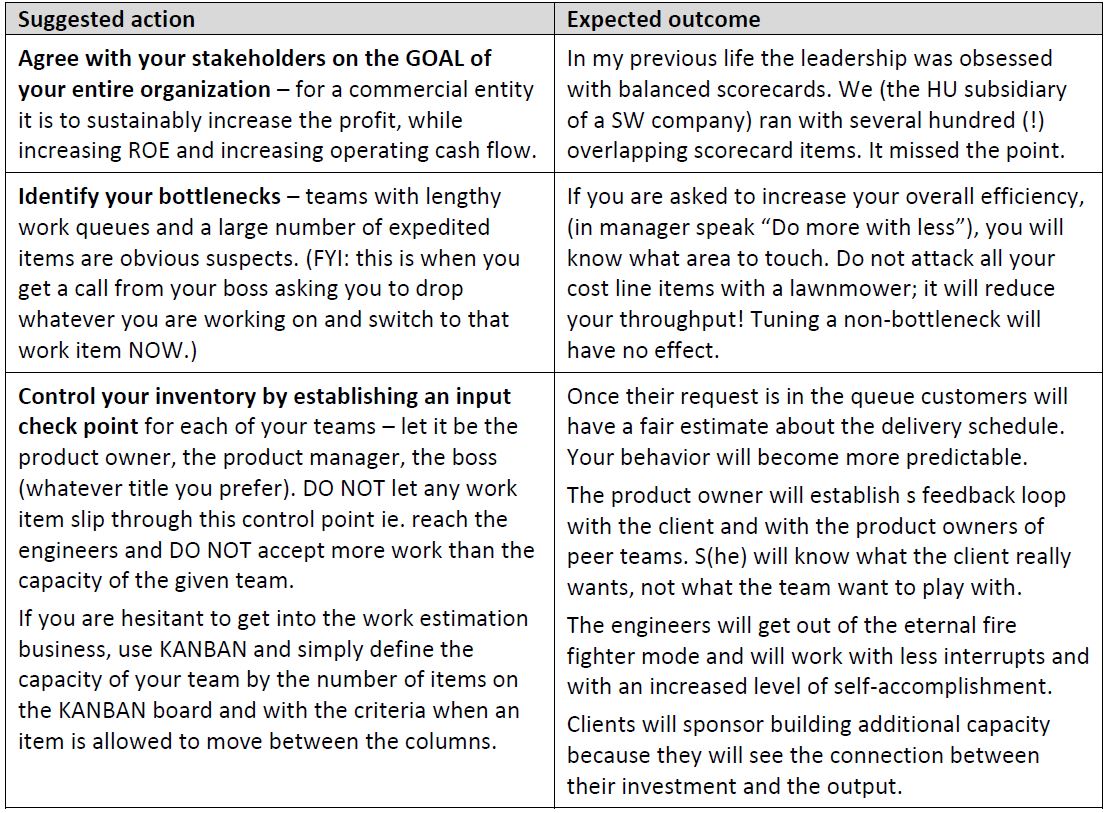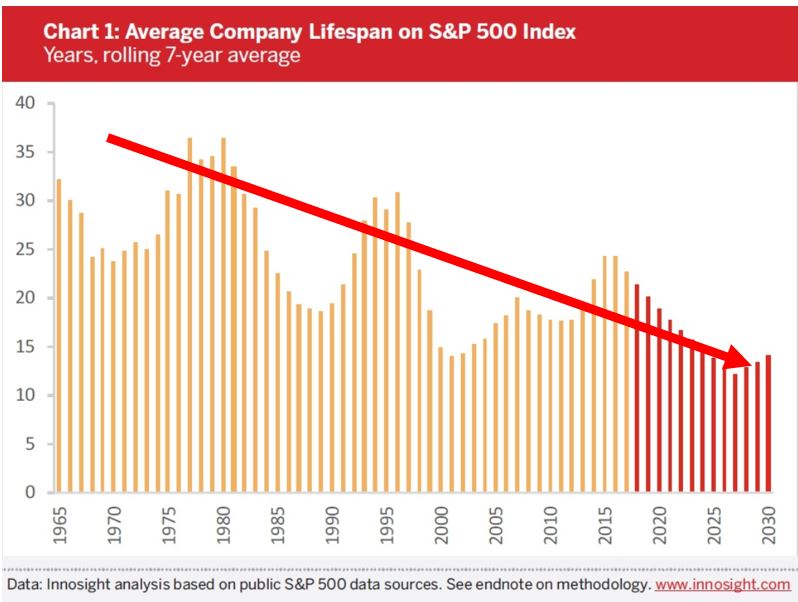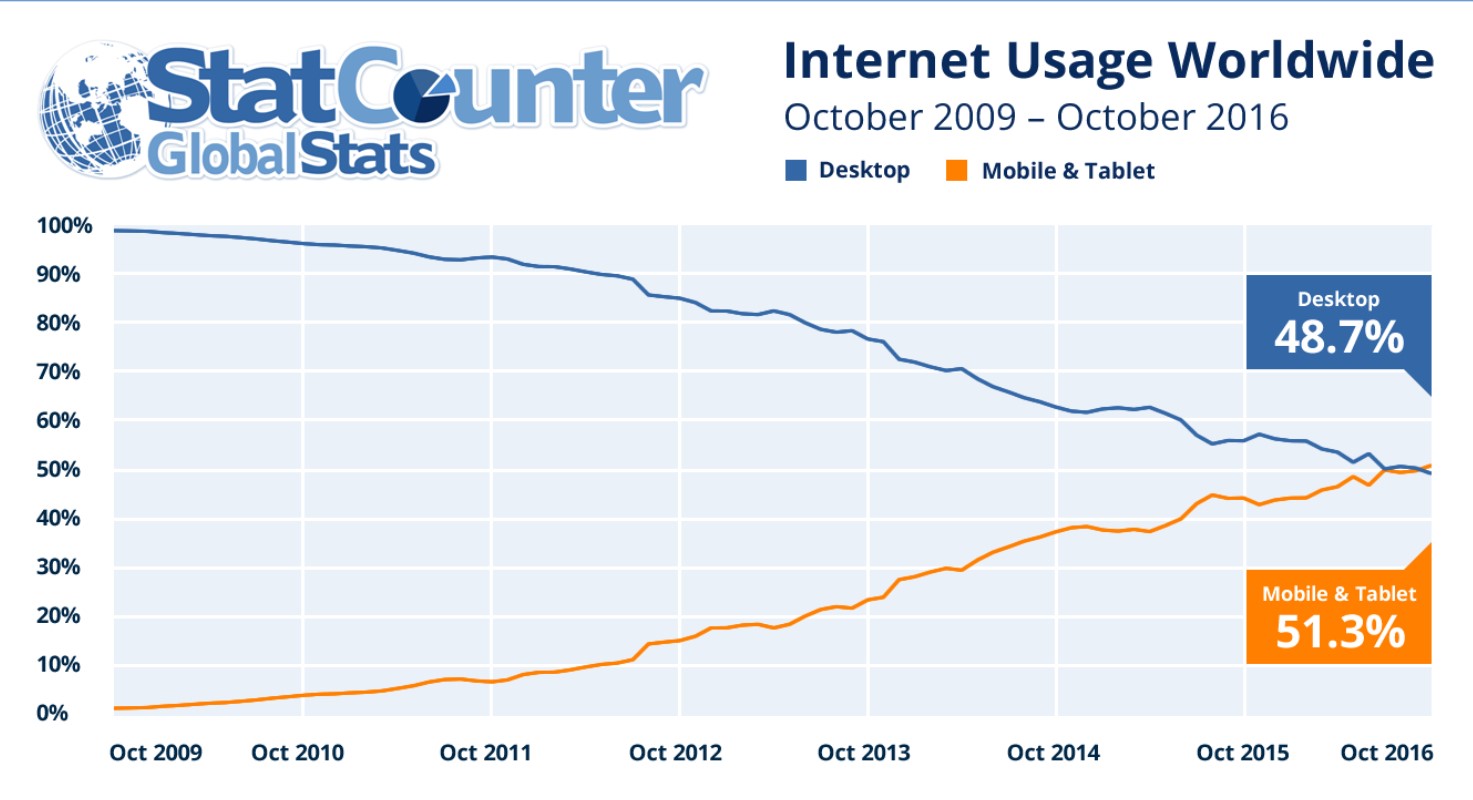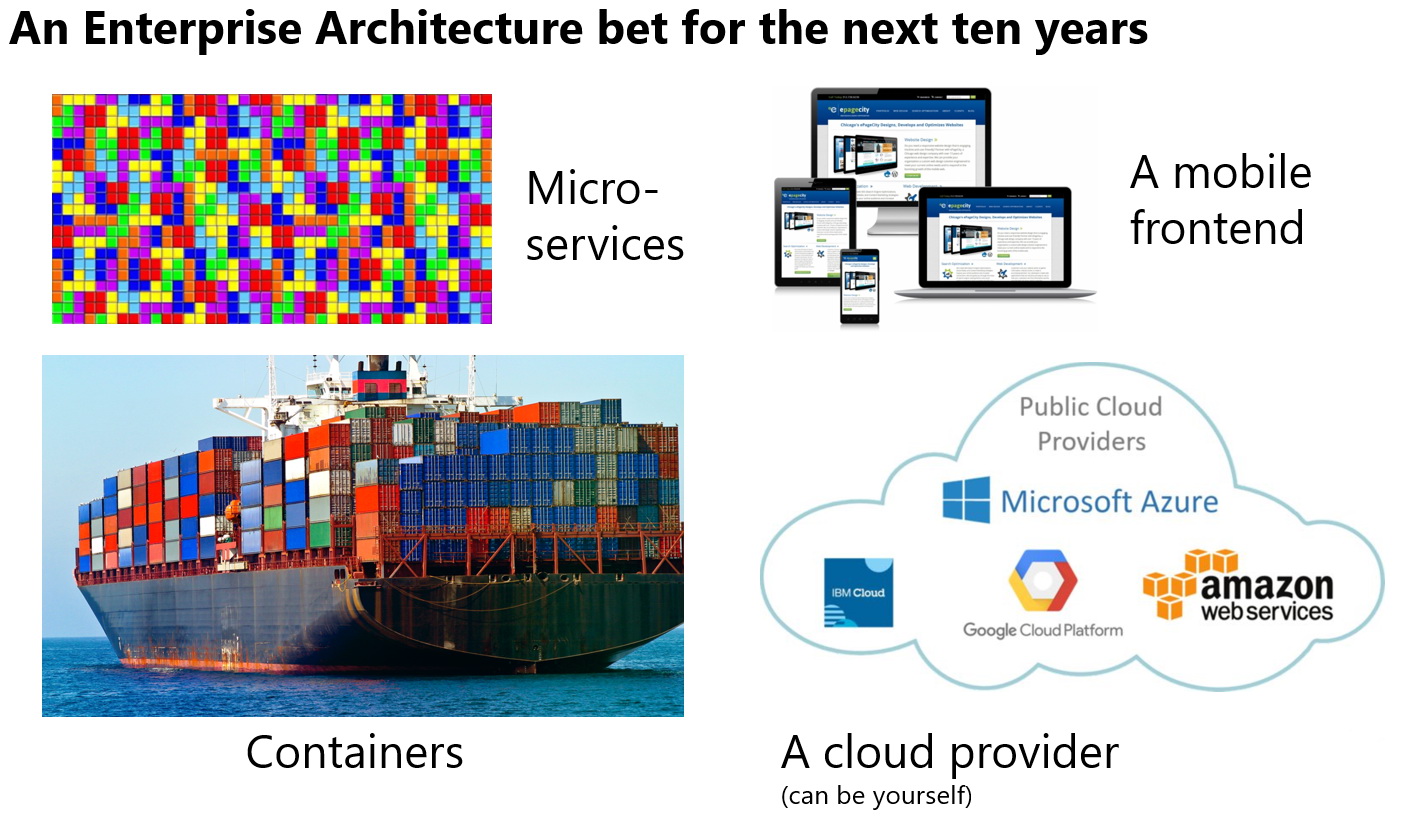Ez a szösszenet Filippov Gábor: A hibrid ellenforradalom kora c. cikkének a kivonata. A célom az, hogy az egyébként remek politológiai esszéből kiszűrjem a lényeget és átadjam azoknak, akik vélhetőleg nem olvasnák el a 14+ oldalas eredetit. A saját megjegyzéseimet dőlt betűvel jelöltem. A cikk túlmutat az átlagmagyar politikai ismeretanyagán és ismeretigényén, ugyanakkor éppen ez az ismerethiány az egyik oka annak, hogy a NER működhet. (amikor egy ismerősünk- egy dolgos, abszolút tisztességes hetven feletti asszony - kijelentette, hogy ő fél a migránsoktól és hogy Orbán Viktor megvédi őt, ezért rá szavazott - akkor már tisztán látszott, hogy baj van.) Ez ellen próbálok tenni a fakardommal. Jó olvasást.
Ami Magyarországon az elmúlt évtizedben történt (a jogállamiság leépülése), nem elszigetelt eseménysor. Nem magyar, de még csak nem is kelet európai betegség, hanem egy világtrend tünete. Nem a „mutálódott fasizmus” megjelenése, nem is „az ötvenes évek visszatérése”, hanem egy saját logikával és jellegzetességekkel bíró globális jelenség.
Elavult összehasonlítások (ez nem a Horthy rendszer reinkarnációja), féligazságokon alapuló azonosítások nemcsak a tisztánlátásunkat, de reakcióinkat is torzítják, ami a meg nem értett jelenségek konzerválódásához vezethet. (értsd a fiúk itt maradnak egy-két generációnyi időre, és csak egy, a magyar történelemben már megszokott kataklizma távolítja majd el őket.)
A kilencvenes évek a demokráciával kapcsolatos optimizmus évtizede volt. A folyamat mindenhol hasonló sémát követett: az állam hatalmának (ön)korlátozása; az egypárti struktúrák leépülése, az állam és a társadalom különválasztása; a versengő többpártrendszer és a rendszeresen megtartott választások intézményesülése; a joguralom és a független alkotmányos intézmények kiépülése; a civil szervezetek és a szabad sajtó burjánzása; összességében a politika, mint a közös ügyek megbeszélésének és intézésének decentralizálódása, „társadalmi üggyé” válása.
A demokrácia diadalmenetének hátterét a Szovjetunió összeomlása teremtette meg. (részletekért lásd Németh Miklós Mert ez az ország érdeke c. önéletrajzát.) Ezzel egyrészt a befolyási övezetében tapasztalt demokratikus törekvések elfojtására kész katonai hatalom tűnt el (lásd 1956). Másrészt a kommunista diktatúra a közvetlen érdekszféráján kívül fennálló önkényuralmi rendszereket sem volt képes tovább segíteni pénzügyi támogatással (lásd Száz év szorongás).
Az autokraták új felismerése: a demokratikus intézményeket nem kell feltétlenül megsemmisíteni: meg is lehet „hekkelni” azokat. Miért fáradoznánk a demokrácia erődjének ostromával, ha sokkal költséghatékonyabb és fenntarthatóbb belülről elfoglalni? Magyarországon ez a folyamat zajlott le.
A demokráciaoptimizmus megtorpanása: Az illiberális demokráciák felemelkedése c. cikk 21 éve jelent meg. A szerző bizonyítja, hogy a többpárti választások önmagukban nem a liberális demokrácia indikátorai. Sőt, sokszor éppenséggel annak elfedésére szolgálnak, hogy a hatalmon lévők rendszerszinten megsértik a törvények uralmát. Ezek volnának az „illiberális demokráciák”: vagyis a formálisan többpárti választásokat működtető, de a demokrácia „liberális” komponenseit, a polgári jogokat, a joguralmat, az állam semlegességét és a hatalomkorlátozást kiiktató rezsimek.
Az „illiberális demokráciák” a demokratikus intézmények és az antidemokratikus hatalomgyakorlás vegyülékei, átmenetek a demokrácia és a tiszta diktatúra között. Ezek az országokban minden megkérdőjelezhető lépéskor az őket megszavazó választói többségre hivatkoznak – vagyis a demokrácia többségi elvére. Nem dobják kukába az alkotmányt, hanem a saját képükre szabják azt. Nem tiltják be az ellenzék működését, csak olyan választási szabályokat és médiakörnyezetet teremtenek, amelyek keretei között a hatalmon lévőket csak óriási erőfeszítések árán lehet leváltani. Ha ez valós fenyegetéssé válik, nem végzik ki ellenfeleiket, hanem adóhatósági zaklatással, köztörvényes vádakkal citálják őket bíróság elé, vagy éppen gazdasági ellehetetlenítéssel veszik el a kedvüket a kellemetlenkedéstől. Legrosszabb esetben pedig ott van a megvesztegetés, az ellenzék kivásárlása, sőt akár saját ellenzék létrehozása, amelyhez korlátlanul állnak rendelkezésre költségvetési források.
A fentiekből adódóan az adott társadalmakban nem alakul ki „betegségtudat”, hiszen formálisan minden demokratikus és jogszerű, és vér sem folyik patakokban az utcán. (A társadalom elalszik.)
Az új autokraták megszegik a joguralom szellemét és szabályait, folyamatosan kiskapukkal élnek, de amíg lehet, ragaszkodnak a formális törvényességhez, és kerülik a nyílt elnyomást. Amikor csak lehet, a vér és puskapor helyett a jogalkotást, a gazdasági erőt és a célzott adminisztratív eszközöket választják.
A demokrácia akkor is szükségszerűen liberális, amikor ultrakonzervatív vagy szocialista pártok vannak kormányon, hiszen az alkotmányosságra, a hatalmi ágak elválasztására, az emberi és polgári jogok széles körű biztosítására épül. A hibrid rezsim ezzel szemben az önkényuralom lényegét tekintve újszerű formája, amelyet ugyanakkor alapvető vonások különböztetnek meg olyan, nyíltan elnyomó diktatúráktól, mint Szaúd-Arábia, Észak-Korea vagy Fehéroroszország. (Ott vagyunk már? Hál istennek még nem…)
A hibrid rezsimekben tartanak szabad választásokat, azaz a hatalom elvileg békésen leváltható, de az intézményi környezet szinte behozhatatlan előnybe hozza a hatalmon lévőket. Az elvileg semleges állami intézmények pártos megszállása, a diszkriminatív jogalkalmazás, az állami forrásokhoz való egyenlőtlen hozzáférés és hatalom médiatúlsúlya olyan mértékben torzítja a demokratikus versenyt, hogy a voltaképpeni választási csalás vagy a nyílt állami erőszak feleslegessé válik. (a külföldön élő magyarok szavazásának adminisztratív ellehetetlenítése, vs. a Magyarországon adót sohasem fizető kettős állampolgárok levélszavazatai már ide tartoznak. 500k nem a Fideszre leadható szavazat kuka, 300k Fideszre leadott szavazat plusz, ez már 10% feletti manipuláció.) A választások sem nevezhetők fairnek, de viszonylag szabadok – épp elégséges mértékben ahhoz, hogy a majdnem biztos vereség tudatában is érdemes legyen indulni rajtuk.
Az autokrácia ellentámadása
Míg a kilencvenes évek az önkényuralom defenzív korszaka volt, az ezredforduló után nem túlzás autoriter újjáéledésről és ellenoffenzíváról beszélni. Ennek nemzetközi kontextusát a nyugati demokratikus tömb hegemóniájának megtörése határozza meg. Ha a demokratizálódás harmadik hullámát az Egyesült Államok egyeduralma jellemezte, az autoriter ellentámadás nemzetközi motorja négy regionális nagyhatalom: Kína, Oroszország, Szaúd-Arábia és Irán meghatározó szerepe. Nemcsak belföldön voltak sikeresek az ellenzék és a civil szféra megregulázásában, illetve a nyilvánosság ellenőrzésében, de befolyásukat a határaikon túlra is kiterjesztették. Ezen államok know-how exporttá alakították az elnyomás finomhangolt jogi és ideológiai eszközeit.
Az autoriter magállamok ideológiai és jogalkotási mintákat kínálnak az új autokratáknak, és kölcsönösen legitimálják egymást, sőt olyan szervezetek tevékenységét is befolyásolják, mint az ENSZ Emberi Jogi Tanácsa. A demokratikus és emberjogi normák számonkérésekor mindig kéznél van a „szuverenitás”, a „nemzeti és civilizációs sajátosságok” vagy a „hagyományos értékek” jelszava. A konszolidált demokráciák korábban mérvadónak számító „demokráciaféltése” már csak egy vélemény a sok közül.
A hibrid franchise
A mai hibrid rendszerek (köztük a magyar) alapját és tartósságuk kulcsát azok a felismerések adják, amelyeket a múlt század diktatúráinak kudarcaiból vontak le:
- A nyílt elnyomás és a rendszerszintű erőszak túl költséges. Az ellenzéki pártok és csoportok betiltása és üldözése, egy elnyomó erőszakszervezet fenntartása és a szabad sajtó korlátozása nem csak pénzben és ráfordított energiában kerül sokba. A rendszer társadalmi elfogadottságát, vagyis legitimitását is gyengíti, ezáltal pedig ösztönzi a társadalmi ellenállást. A teljes tiltásnál mindig hatékonyabb és fenntarthatóbb az éppen csak „szükséges mértékű” korlátozás.
Ahelyett például, hogy felszámolnák az alkotmánybíróságokat, inkább törvényben korlátozzák a hatáskörüket, vagy egyszerűen bővítik a létszámukat, és az új helyeket megbízható káderekkel töltik fel. Megfelelő törvényhozási többség birtokában ugyanígy szállják meg vagy üresítik ki a többi kulcsfontosságú kontrollintézményt: az ügyészi és bírói szervezetet, a médiafelügyeletet, a választási szerveket, a jegybankot, az állami számvevőszéket stb.
A szabad sajtó törvényi felszámolása helyett gazdasági eszközökkel, a rendszert támogató oligarchák segítségével is kiépíthető az állami információs monopólium: a nyilvánosság olyan szerkezete, amelyben az ellenzéki hangok nem jutnak el a lakosság kritikus tömegéhez. Összességében a hibrid rezsimek fő erőforrását a kritikus mértékű társadalmi „betegségtudat” hiánya jelenti.
- A demokratikus intézményrendszer nem akadály, hanem erőforrás. Miért tartanak az új autokraták választásokat, amelyeket el is veszíthetnek? Egyszerűen azért, mert költségesebb és hosszú távon kockázatosabb nem vállalni ezt a kockázatot. A nyílt elnyomás öncenzúrára és hamis konformizmusra ösztönzi a polgárokat, ami viszont megfosztja a hatalmat az országban uralkodó valós közhangulatra vonatkozó megbízható tudástól. A relatíve szabad választások a legreprezentatívabb közvélemény-kutatás is egyben. A demokratikusnak tűnő pártverseny erős legitimációt ad a nép által újra és újra megválasztott hatalomnak, és a választási harc az esetlegesen belső konfliktusoktól terhelt hatalmi elit sorait is összezárja a rendszer védelmében. Ugyanakkor a vezetők azt is felmérhetik, mekkora a rezsim valós támogatottsága, és milyen mértékű mobilizációra képesek az ellenfelei, ami az önkorrekcióra is lehetőséget biztosít. (lásd pl. az internet adóról való gyors lefordulás és az autópálya díjakkal való kihelyettesítése.)
- A demokrácia jelszavai és intézményei a leghatékonyabb fegyverek a demokrácia ellen. Az új autokraták a demokrácia saját nyelvét használják fegyverként. A „többség diktatúráját”, a mindenkori győztes túlkapásait megakadályozni hivatott, független intézményekkel szemben, mint az alkotmánybíróságok, a bírói kar vagy a nemzetközi jogvédő szervezetek, rendre az állami szuverenitásra és a népképviseleti felhatalmazásra hivatkoznak: „senki által meg nem választott bürokraták nem írhatják felül az elsöprő többséggel megválasztott parlamenti többség akaratát”.
- Az erőszak privatizálható és kiszervezhető. Egy diktatúra félreismerhetetlen megkülönböztető jegye a saját polgárai ellen alkalmazott átfogó erőszak állam általi gyakorlása. Az állam (vagy az állampárt) képviselői (a Gestapo, az NKVD, az ÁVO stb.) lépnek fel az ellenzéki hangokkal szemben. Ők az állam nevében börtönöznek be vagy gyilkolnak meg újságírókat, koncepciós perek keretében, bírósági ítélet nélkül tüntetnek el civileket az állam börtöneiben vagy táboraiban.
Egy demokratikus színfalak között működő hibrid rezsimben ezzel szemben nem a rendőrség vagy pártmilíciák terrorizálják az ellenzékieket, hanem a hatalomtól formálisan független „civil” biztonsági szolgálatok és ifjúsági szervezetek. A politikai természetű erőszak felelőssége így elhárítható az államtól, amely kívülállóként minősítheti alulról szerveződő társadalmi konfliktusnak az általa gerjesztett és a saját érdekeit szolgáló repressziót. Magyarországon a szocialisták népszavazási kezdeményezését 2016-ban fizikai erővel akadályozó, a sajtóban csak „kopaszokként” emlegetett csoport következmény nélkül maradt fellépése jól mutatja, hogy szükség esetén itthon is akad olyan magánszereplő, amely elvégzi az állam helyett a piszkos munkát.
- A civil szervezeteket nem kell betiltani, elég betörni. A demokráciákban a politikai diskurzus és döntéshozatal nem az állam kiváltsága, hanem a társadalmi erők sokkal szélesebb köre számára nyitott. Meghatározott témák köré szerveződött civilek befolyásolják a döntéshozókat, hogy fontos, de elhanyagolt problémákkal foglalkozzanak, vagy éppen ellátják azokat a feladatokat, amelyeket az állam nem, vagy nem elég jól lát el. A szabad sajtó mellett független társadalmi szervezetek figyelik, ellenőrzik az államhatalom minden lépését, és felhívják a figyelmet az esetleges állami visszaélésekre, jogsértésekre. A civilek politikai tevékenysége nem demokratikus defektus, ahogy a kormány állítja, hanem a konszolidált demokráciák egyik alapköve. (ezt érzem Orbán Viktor igazi vétkének, ti. hogy akadályozza a magyar társadalomfejlődést, azaz megakadályozza a valódi polgáriasodást, amit 30 évvel ezelőtt ő maga is képviselt.) A független civil társadalomra az autokraták a liberális demokrata nyugat ötödik hadoszlopaként kezdtek tekinteni, ez a Stop Soros valódi indítéka.
A civil szervezetek működését korlátozó jogszabályok igyekeznek kontroll alá vonni és megbénítani az NGO-kat: előzetes kormányzati jóváhagyáshoz kötik a működésüket, „idegen ügynök”-törvényekkel bélyegzik meg a tagjaikat, pénzmosás- és terrorizmusellenes jogszabályokra hivatkozva korlátozzák vagy megadóztatják a külföldről érkező támogatásaikat, rágalmazási perekkel vegzálják a civileket, illetve baráti álcivil szervezetekbe próbálják becsatornázni a külföldi donorok hozzájárulásait. Ezek az intézkedések öncenzúrára vagy teljes depolitizálódásra ösztönzi azokat, akik egyáltalán megmaradnak a civil szférában. Figyelemre méltó a „zombi NGO-k” vagy GONGO-k (government-organized non-governmental organization), vagyis a rezsim által fenntartott, „házi” álcivil szervezetek megjelenése. Ezek elsődleges funkciója, hogy a hatalom által „helyesnek” tartott civilséget jelenítsék meg. A kormányzati propagandamédiához hasonlóan céljuk a kormánytól nem függő szakértői kritikák hiteltelenítése, a kormányzati kommunikációs panelek szakmai véleményként való közvetítése.
Bár hajlamosak vagyunk történelmi párhuzamokhoz nyúlni a jelen megértésekor, fontos felismerni, hogy a hibrid rendszerek nagyon kevés vonatkozásban emlékeztetnek a „klasszikus”, huszadik századi diktatúrákra, mindenekelőtt a leggyakrabban hivatkozott példákra: a náci Németországra és a sztálini Szovjetunióra.
Ezért is uralkodik például a magyar közbeszédben a szembenálló (az egyszerűség kedvéért: fideszes és nem fideszes) szekértáborok között a kölcsönösen egymást tagadó párhuzamos valóságok diskurzusa. Az egyik oldal joggal mutat rá a demokrácia és a jogállamiság súlyos leépülésére, az intézményesített autoriter gyakorlatok terjedésére, mindenekelőtt pedig a nyilvánosság és a pártverseny durván esélytorzító szerkezetére. Eközben a másik oldalnak is igaza van, amikor túlzónak minősíti a diktatúrázást, a fasizmussal, a sztálinizmussal való összevetést, amely egyszerűen figyelmen kívül hagyja a (Magyarországon szerencsére nem létező) rendszerszintű erőszak jelentőségét, illetve a viszonylag szabad (bár fairnek már nem mondható) választások meglétét. Azért kulcsfontosságú felismernünk a NER hibridizálódó jellegét, mert a népirtó rezsimekkel való indokolatlan rokonítás minden érdemi kritikát hiteltelenít. Hagyjuk a náci párhuzamokat, ez árt.
Magyarország hibridizációja
A demokrácia, a diktatúra és a kettő közötti „szürke zóna” nem háromosztatú tér, hanem sokkal inkább egy széles skála három különböző tartománya. Nehéz meghatározni, mikortól nem nevezhető többé demokráciának egy ország politikai rendszere. Magyarország esetében is bizonytalan, hogy a hatalommegosztás, a joguralom és a pártverseny tisztasága pontosan mikorra erodálódott a demokráciákkal összeegyeztethetetlen mértékig. Csak egy dolog biztos: Magyarországon mára pártirányítás alá került az elvben semleges állami intézményrendszer és a nyilvánosság meghatározó része, a kormányoldal pedig oly mértékben képes jogalkotási és adminisztratív eszközökkel az érdekei szerint manipulálni a választási környezetet, hogy hazánk mostanra megfelel a versengő autoriter rezsim definíciójának. Magyarország egy polgári rezsim, amelyben léteznek a formális demokratikus intézmények, és ezeket tekintik a hatalomra jutás elsődleges eszközeinek, de amelyben a hatalmon lévőket jelentős előnyhöz juttatja az állami intézményekkel való visszaélés (…), és a játéktér súlyos mértékben a hatalmon lévők javára lejt. A verseny így valódi, de nem tiszta: egyetlen párt (ne udvariaskodjunk most a KDNP-vel) alkotott olyan új választójogi környezetet, amelynek a választókerületi beosztástól és a második forduló elhagyásától a kampányfinanszírozási rendszeren, illetve a televíziós és plakáthirdetések szabályozáson át a győzteskompenzációig és választásért felelős szervek összetételéig minden eleme a kormányzó párt aktuális érdekeire lett szabva.
Ezt az előnyt tetézi a közmédia és a közpénzzel megtámogatott, lojális oligarchák által megszerzett kereskedelmi médiaportfólió pártutasításos vezérlése; az ügyészi szervezet, az Állami Számvevőszék és az Alkotmánybíróság diszkriminatív jogalkalmazása, komplett iparágak fideszes ellenőrzés alá vonása; valamint az állam kegyeitől függő legszegényebb rétegek totális egzisztenciális kiszolgáltatottsága. A rezsim ráadásul mindeddig kellő biztonságban érezhette magát ahhoz, hogy még csak ki se játssza az összes kártyáját. Hogy milyen további adminisztratív lehetőségek állnak rendelkezésére arra az esetre, ha egyszer valóban fenyegetve érezné magát, abból csak ízelítőt adott az Állami Számvevőszék akciója a kampány kellős közepén a Jobbik és más ellenzéki pártok ellen. Ettől tartok igazán, egy sarokba szorított diktátor sutba dobja minden erkölcsi gátlását a hatalom megtartásáért ill. a felelősségre vonás elkerülése érdekében.
Félreértés ne essék: mindez nem mentség az ellenzéki pártok inkompetenciájára és látványos kontraszelekciójára, a hatékony politikai alternatívaképzés totális hiányára. A magyar intézményes ellenzék rossz minőségű és ügyetlen. Orbán Viktor továbbra is a magyar kínálat legtehetségesebb hatalompolitikusa, de vízszintes pályán meg lehetett verni. (lásd Medgyessy Péter esetén. BTW: egy tisztességes közgazdásztól nem vártam volna egy „Jóléti rendszerváltás” néven elkövetett ámokfutást.) A szocialista-szabaddemokrata koalíciók arcpirító korruptsága joggal ásta alá a velük szembeni állampolgári bizalmat (és vezetett az első kétharmadhoz, ami lehetővé tette a NER bebetonozását), de a korrupció mai szintje sem indokolja a harmadik kétharmadot.
A demokrácia természetéből adódóan sérülékeny rendszer, amely a többségi elv (a folyamatosan változó „népakarat”) és az előbbit kordában tartó alkotmányosság (a fékek és ellensúlyok) törékeny egyensúlyára épül. Ez az egyensúly pedig bármelyik irányban könnyen megbillen. A képviseleti rendszer elitjellege elszakíthatja a „népuralmat” a néptől. (el is szakította…) Ugyanakkor a demokrácia lényegéből fakadóan annak a veszélynek is mindig ki van téve, hogy az aktuális többség az alkotmányosságot semmisíti meg, és végső soron magát a rendszert váltja le. Különösen nagy a kockázat nálunk, ahol az állampárti múlthoz való viszonyra épülő ellentétek megosztják a politikai közösséget, és az ország két fele ellenségként tekint egymásra. Az ilyen politikai atmoszféra előbb-utóbb megteremti a lehetőséget a hatalom extrém túlterjeszkedéséhez: ez nem egyes politikusok egyéni romlottságából, hanem a hatalom logikájából adódik. Azaz: Orbán NEM 1G, hanem egy a hatalom logikáját értő és az ellenzék bénázását profin kihasználó politikus. Persze ettől még nem ok, amit csinál.
Nem kell különösebb gonoszság ahhoz, hogy valakiből autokrata legyen, inkább ahhoz szükséges kivételes államférfiúi bölcsesség és önmérséklet, hogy valaki ne legyen az, amikor megtehetné.
A hibrid rendszerek csele, hogy a jogállami színfalak miatt nem-demokratikus és szabadságellenes jellegükkel gyakran még működtetői és támogatói jelentős része sincs feltétlenül tisztában. Fontos belátni, hogy a „posztkommunista maffiaállam” népszerű koncepciójával szemben a magyar demokráciát nem hataloméhes bűnözők maroknyi csoportja tartja tetszhalott állapotban, akik kizárólagos célja a nemzeti és uniós erőforrások minél alaposabb kiszipolyozása. A korrupció és a közpénz közpénzjellegének elveszítése nem cél, hanem eszköz. Nem a közhatalom rendelődik alá a járadékvadászatnak, hanem fordítva: az intézményes korrupció a hatalom megtartásának egyik előfeltétele. Ez fontos, a lenyúlt pénz kell a klientúra etetéséhez ill. az agymosó média életben tartásához. Nem véletlen, hogy ezekről az orgánumokról nem közölnek példányszám ill. nézettségi adatokat.
A jó hír az, hogy a hibrid rendszerek fő erőssége egyben fő gyengeségük is. Mindaddig, amíg választásokat tartanak, le is válthatók békés úton. Ha pedig ezt úgy akarnák megelőzni, hogy betiltják vagy látványosan elcsalják a választásokat, legitimitásuk alapját ássák alá. Igaz, az ellenzék győzelme nem jelenti a demokrácia szükségszerű restaurációját: a legyőzött autoriter kormányokat gyakran hasonló autokraták követik.
Ha a demokrácia védelmezői választás útján akarják megdönteni a rendszert, ahhoz „egyszerűen” demokratikus többségre van szükségük. Igaz, ennek a többségnek a megteremtéséhez épp a rendszer természetéből adódóan sokkal több kreativitásra és erőfeszítésre van szükségük, mint a konszolidált demokráciákban. Bármennyire kevéssé biztatóan hangzik is, tiszta és kiegyensúlyozott pártversenyben egy idő után még egy ilyen ellenzéknek is kell tudnia győznie. Míg utóbbiban egy csapnivaló ellenzék is képes lehet a győzelemre, egy hibrid rezsimben csak átlagon felüli ideológiai és kommunikációs innovációt, illetve kivételes egységet felmutatni képes ellenzék győzhet. Nyilvánvaló, hogy a mai magyar ellenzék nem ilyen. Sőt, számos jel mutat arra, hogy meghatározó erői rég megindultak a kooptáció ösvényén: vagyis zsarolás, megvesztegetés hatására a rendszer díszleteivé váltak, mint megannyi más hibrid rendszerben.
Két dolog ma is jól látható: először is, hogy a technikai bűvészkedés (összefogás vagy koordináció, választási párt vagy civil jelöltek) önmagában nem fogja megoldani a problémát, csak elvonja az energiát a valós feladattól: az új többség előállításától. A közel hárommilliós szavazóbázissal szemben a létező ellenzék bázisának akármilyen kombinációja legjobb esetben is legfeljebb egy újabb kétharmad megakadályozására, de demokratikus restaurációra semmiképp nem elég. Ehhez az ellenzéki pártoknak nemcsak hosszú távú politikai stratégiájukat, de egymáshoz való viszonyukat, öntisztulásukat és a választók elérésének új eszközeit is a rendszer egyre mélyülő hibridizációjának tényéhez kell igazítaniuk.
Ma az ellenzéki politikusok, miközben diktatúrát emlegetnek, úgy politizálnak, mintha konszolidált demokráciában versenyeznének, pedig egyik sem igaz: sajtótájékoztatókat tartanak, törvényjavaslatokat nyújtanak be, interpellációkat olvasnak fel, reggel és este pedig felháborodnak vagy az összefogás esélyeit elemzik az ellenzéki médiában, esetleg a köztévén próbálnak öt percben vitát nyerni az egész nap a nézőre zúduló propagandával szemben.
A második axióma, hogy a politika visszahódítása a fentiek ellenére is a politika feladata. A civil szervezeteknek, a független sajtónak, a „véleményformáló értelmiségnek” fontos normaképző és ellenőrző funkciójuk van. Intézményes politikai alternatívát azonban egyik sem képezhet. Ugyanez igaz az Európai Unióra is, amelyet nem arra hoztak létre, hogy autoriter rendszerekkel hadakozzon, és a jelek szerint a jelenlegi állapotában nem is képes erre. Mindez a pártok feladata. http://ketfarkukutya.com/
